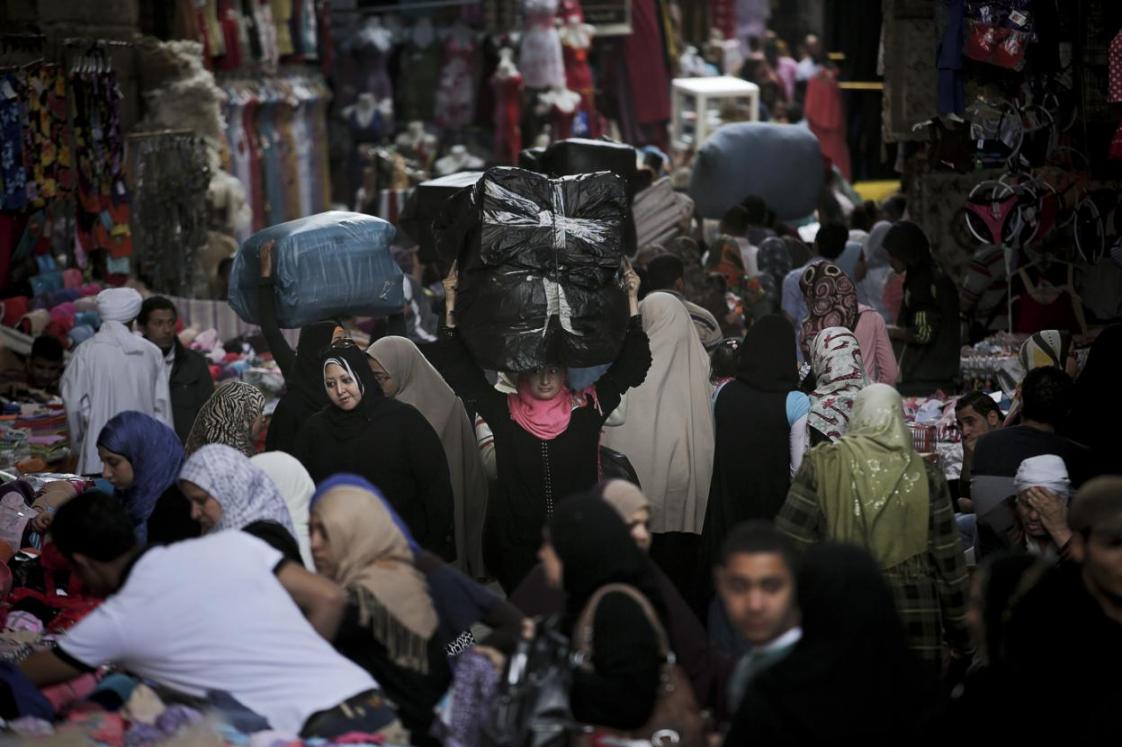The Middle East and North Africa region continues to experience lackluster growth for the fourth year in a row, the IMF said in its latest regional assessment.
The IMF’s Regional Economic Outlook, released on October 27, projects growth to increase slightly to 2.6 percent this year. Growth could pick up in 2015 if security conditions improve.
IMF Middle East Department Director Masood Ahmed said regional conflicts have had an economic impact both on the countries directly affected and their neighbors.
“The economic costs have been felt so far mainly in the countries where the conflict is taking place. But there is also an impact in neighboring countries. The numbers so far don’t show a big impact on growth, but it’s clear that this conflict has an effect on their neighbors through refugees whom they have to care for and provide financing for. That’s particularly true for Jordan and for Lebanon. It has an impact on trade. It has an impact on tourism. And it also creates a greater sense of risk for the region as a whole which affects foreign investors.” Ahmed said.
For countries that have buffers, it will be important to adjust their fiscal positions gradually to limit the drag on economic growth, he added.
Key Reasons
Key reasons behind weakening fiscal and external balances are large energy subsidy and wage bills. These countries need to contain government spending to ensure fiscal sustainability and to bequeath future generations an equitable share of the resource wealth, says the report.
Oil exporting countries have been relying on a growth model that was dependent on growth of government spending on the back of rising oil prices.
The IMF highlighted some positive trends in the region’s oil importing countries. Exports, tourism, and foreign direct investment are gradually improving in some cases as political uncertainties ease.
In addition, many countries — most notably Egypt, Jordan, Mauritania, Morocco, Pakistan, Sudan, and Tunisia — have made progress in containing their energy subsidy bills. The objective has generally been to re-channel part of the savings to support growth and reduce poverty through better-targeted social safety nets and growth-generating investments in infrastructure, healthcare and education. Countries are also using part of the savings from subsidy reform to rein in fiscal deficits, says the report.
“Many countries in the region Morocco, Tunisia, Jordan, Egypt, Yemen – have all taken action in the last two years to replace these general subsidies with more targeted subsidies for poor people and then freed up some money, which they’re now spending on investment, on education, on health,” Ahmed said.
Nonetheless, the combination of deep-rooted socio-political tensions, structural bottlenecks, as well as spillovers from intensifying regional conflicts, has been holding back growth from reaching the levels needed to reduce the prevailing high rates of unemployment, the IMF says.
Against this backdrop, the IMF expects economic activity in these countries to remain lackluster this year at about 3 percent, and to pick up to about 4 percent in 2015. However, this outlook still faces significant risks.
The report also cautioned that debt-to-GDP ratios are still rising and gross external financing needs for this group of countries are expected to reach $100 billion next year. The IMF urges many of the oil importing countries to maintain the reform momentum going forward to bring down high unemployment rates.


